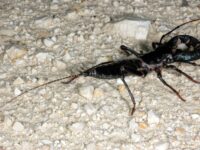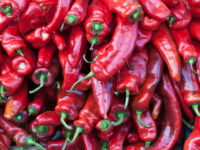Whether it be jumping into an ice-cold body of water or stepping outside into the cold, unexpected immersion into the cold isn’t uncommon. However, in extreme coldness, the body may undergo an automatic response; this is called a cold shock response. Cold shock responses include a series of involuntary responses, specifically in the heart and lungs, after sudden exposure to the cold. A group of ecological and biological researchers from various backgrounds set out to discover how a community of butterflies in the Andes Mountains respond to sudden coldness.
Butterflies are terrestrial ectotherms, which means their body heat relies on the environment. In comparison, humans are terrestrial endotherms, meaning internal body temperature is less dependent on external factors. Therefore, being immersed in the cold should have a drastic effect on a butterfly’s regulation of body heat. Prior studies evaluated butterflies’ and other terrestrial ectotherms’ cold shock responses, but the majority of them have been performed in a lab-like setting rather than in the natural habitat of the Andes. Based on prior theories, the researchers proposed four hypotheses on how the butterflies would react.
The first one was the intrinsic hypothesis, which states that species traits will determine the response to the event. The second hypothesis was the extrinsic hypothesis, or that environmental factors will determine the species’ response. The third one was the climate variability hypothesis, which states that previous exposure to the event will determine the magnitude and type of response. The final hypothesis was the thermal melanism hypothesis, which theorizes that darker-colored individuals will absorb heat faster than lighter individuals.
To determine if elevation would affect butterfly response, researchers studied butterflies in the cloud forests, at a higher elevation (around 1,800 meters above sea level) and in the lowland forest, at a low elevation (about 600 meters above sea level). They captured the butterflies and kept them in a shaded, cool place. Then, the researchers placed the butterflies in waterproof containers in ice water to induce the cold shock environment. After an hour of being submerged in the ice, the butterflies were released in an open enclosed area, where scientists timed how long it took for the butterflies to start flying again. If the butterflies didn’t fly after 30 minutes, the researchers concluded that there was no response. During this, the researchers chemically measured the internal responses and took note of specific features of the butterflies.
This experiment was performed on 1,227 butterflies belonging to 221 species. Out of all the butterflies, only 60.8 percent achieved full recovery and were able to fly within 30 minutes. When the researchers examined the similar traits between the butterflies that recovered, they discovered that butterflies with higher melanin and darker coloring recovered faster than butterflies with lower melanin.
Therefore, the thermal melanism hypothesis seems most likely. This theory proposes that the amount of melanin in the organism determines its response to the cold. Melanin and solar intensity are a dynamic interaction, as more melanin absorbs more solar energy. This was shown in this experiment; the darker butterflies absorbed the light quicker, leading to a faster recovery time. Additionally, when the butterflies were exposed to less light while recovering, the recovery time decreased. This hypothesis held true when tested on the variety of species of the butterflies tested.
Studying how species and organisms react to extreme temperature changes is especially important today where climate change is especially prevalent. Research shows that changes in the environment have drastic effects on butterflies. For example, unusually heavy rains in the spring of 2018 led to a 49 percent decrease in monarch butterflies in the United States. Harsh and long winters have also contributed to the steady decline of monarch butterfly populations, as it interferes with their mating season. The research on butterflies’ response to cold shock and the thermal melanism hypothesis is a huge step forward in seeing how terrestrial ectotherms react to changes in the environment and how climate change could have possible detrimental effects on those species.
References
Biotropica (2021). DOI: 10.1111/btp.13046
Frontiers in Ecology and Evolution (2019). DOI: 10.3389/fevo.2019.00258
Image courtesy of Wikimedia Commons






